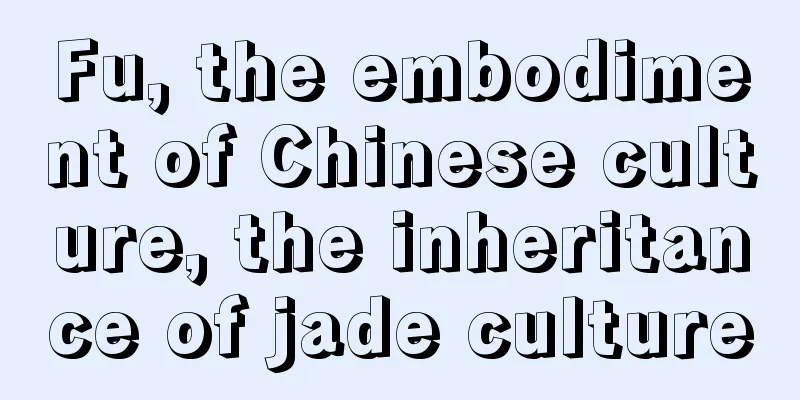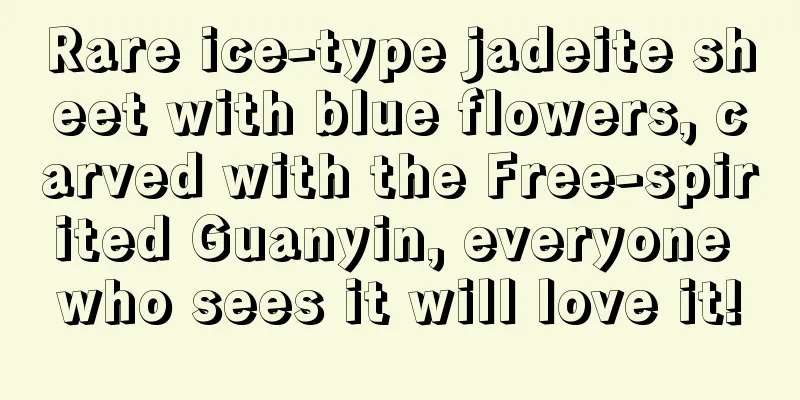Fu, the embodiment of Chinese culture, the inheritance of jade culture

|
Jade was introduced to China from Myanmar in the 16th century. It was also from that time that it was loved by the Chinese people. Since then, it has taken deep root in the long history of China and has developed to this day. Today, after a long historical evolution, the long-standing Chinese traditional culture and the king of jade - jadeite have gradually become closely integrated in the process of mutual penetration and sublimation, and Chinese traditional culture is fully reflected in jadeite. Every year during the Chinese New Year, everyone sticks a "Fu" character on their door, which shows that "Fu" has been an auspicious character in the minds of Chinese people since ancient times. Praying for blessings, hoping for blessings to come, and cherishing blessings are all common pursuits of everyone. For thousands of years, "Fu" has been interpreted into a deep-rooted culture. Blessing culture is the core of China's auspicious culture, which can be seen from the five aspects of blessing, wealth, longevity, happiness and wealth. "Blessing" is not only the first of the five major themes, but also the summary and representative of various auspicious cultures. It is the unique traditional cultural essence of the Chinese nation. In later Olympic Games, the appearance of the five Fuwa represented the importance of the word "Fu" in China. It embodies the Chinese people's ethical emotions, life consciousness and aesthetic taste. We can see the manifestation of people’s blessing mentality in many concrete things. The ancients believed that the dragon was the leader of all reptiles and had infinite abilities to transform; the phoenix was the king of all birds and the embodiment of good fortune. Wherever dragons and phoenixes appear, there will be peace and a good harvest. In jade carvings, there are many images that symbolize good fortune. For example, a dragon and a phoenix are called "dragon and phoenix bringing good fortune." Pixiu is a mythical beast in ancient Chinese mythology and legends. It is ferocious and powerful. It is responsible for patrolling the sky to prevent demons, ghosts, plagues and diseases from disturbing the heavenly palace. Legend has it that the Pixiu violated the rules of heaven, so the Jade Emperor punished him by making him eat only wealth from all directions, swallow everything without defecating, and be able to attract wealth and treasure, only taking in and not giving out, with extraordinary magical powers. After this story spread, the Pixiu was regarded as a lucky animal that brings wealth and treasure. Many Chinese people wear jade products with Pixiu in the shape of Pixiu because of this story. The ancients believed that bats, elks and longevity peaches were all auspicious objects. The three of them together were called "Fu Lu Shou" (homonym), which means good fortune, health and longevity. Jade carving themes like this are also very common in modern times and are also a tradition of expressing emotions through objects. Blessing culture is an important part of Chinese traditional culture. It is rich in content and profound in connotation. Jade is an important carrier for inheriting China's traditional blessing culture. While people enjoy the beauty of jade, they also carry blessings with them. As the saying goes, wearing gold shows wealth, wearing jade ensures safety. fcgc66 fcpf18 |
<<: Decoding the entire process of jade carving
>>: Jadeite, the representative of jade culture
Recommend
Is white-bottomed green jadeite worth collecting?
The so-called white base with green floating on i...
How to choose a jade ring? It's not difficult, just grasp these points
Jade rings are simple and elegant, with both the ...
Different jade ornaments represent different meanings
Nowadays, many people prefer small jade jewelry w...
The good luck meaning of the jadeite Lulutong ornaments
The three colors lead to all roads, with bright a...
The meaning of violet jade is beautiful and unique, and women love it.
In the jade world, there is a special variety - v...
Nine Jade Lucky Charms That Feng Shui Masters Won't Tell You
People wear jade ornaments to protect themselves,...
How to identify the authenticity of jadeite, four tips to identify it immediately
1.Weight identification Since the density of jade...
Wasn’t jadeite called jadeite before?
I believe that everyone is very familiar with jad...
Burmese jadeite, jade cannot be made into a useful object without being carved, it requires good material and excellent workmanship!
As the saying goes, jade cannot be made into a us...
The carving process of Guanyin in Muna
The materials from the Mu Na mine account for a c...
The difference between the authenticity of the rare "black jadeite", are you still buying fakes?
Black jade is a rare variety of jade. It is gradu...
Learn to appreciate, the tiny flaws in jade are also beautiful!
Everyone who loves jade wants to own a flawless p...
There are so many kinds of jade jewelry, what are the requirements for wearing them? If you want to know, just look here.
With the improvement of people's living stand...
Why is jade said to be the most "charming" oriental jewelry?
The Chinese nation has long been known as the &qu...
This is how you should choose Guanyin for men, otherwise it is better not to wear it
"Men wear Guanyin and women wear Buddha"...









